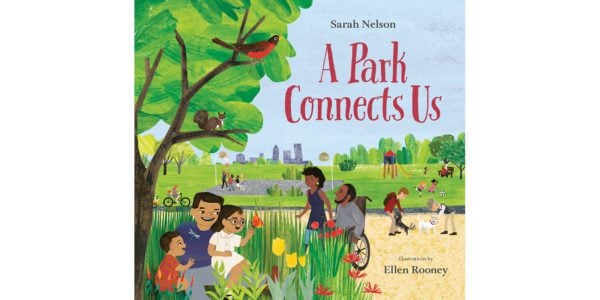
Written by poet Sarah Nelson and beautifully illustrated by Ellen Rooney, A Park Connects Us is a love letter to city parks. Nelson’s lyrical text makes this book well-suited for reading aloud, while Rooney’s colourful double-page spreads are full of details that engage readers, embedding hints of what is to come when the page is turned. The characters we follow in the park are diverse, featuring many people of colour, disabled characters, and two women getting married. In both its main text and pictures, A Park Connects Us emphasizes that public parks should be for everyone.

Unfortunately, the book’s message of inclusion falls somewhat flat when it comes to the back matter. The book ends with a brief history of city parks, focused particularly on Central Park – one of the first major public park projects in North America. Here, it refers to the land used to create Central Park as “a long, scraggly rectangle of land in Manhattan” that was bought by the city. In fact, much of the land used to create Central Park was once Seneca Village, the first community of free Black Americans in New York City. Seneca Village was designated as the site of the future park only after wealthy white residents refused to let the city use their land. Residents of Seneca Village protested the land seizure, but, through eminent domain, the city forced them from their homes. Glossing over this history after making the choice to talk about Central Park weakens a book that otherwise seems to champion inclusion.
A Park Connects Us is a bright, easy book that encourages its readers to appreciate green space in their neighbourhoods, and is full of detailed illustrations that work hand in hand with the text to create an immersive read. Readers should approach the back matter with a critical lens, however, as it undermines the care taken to highlight diversity in the rest of the book.
 Contact us via email
Contact us via email
